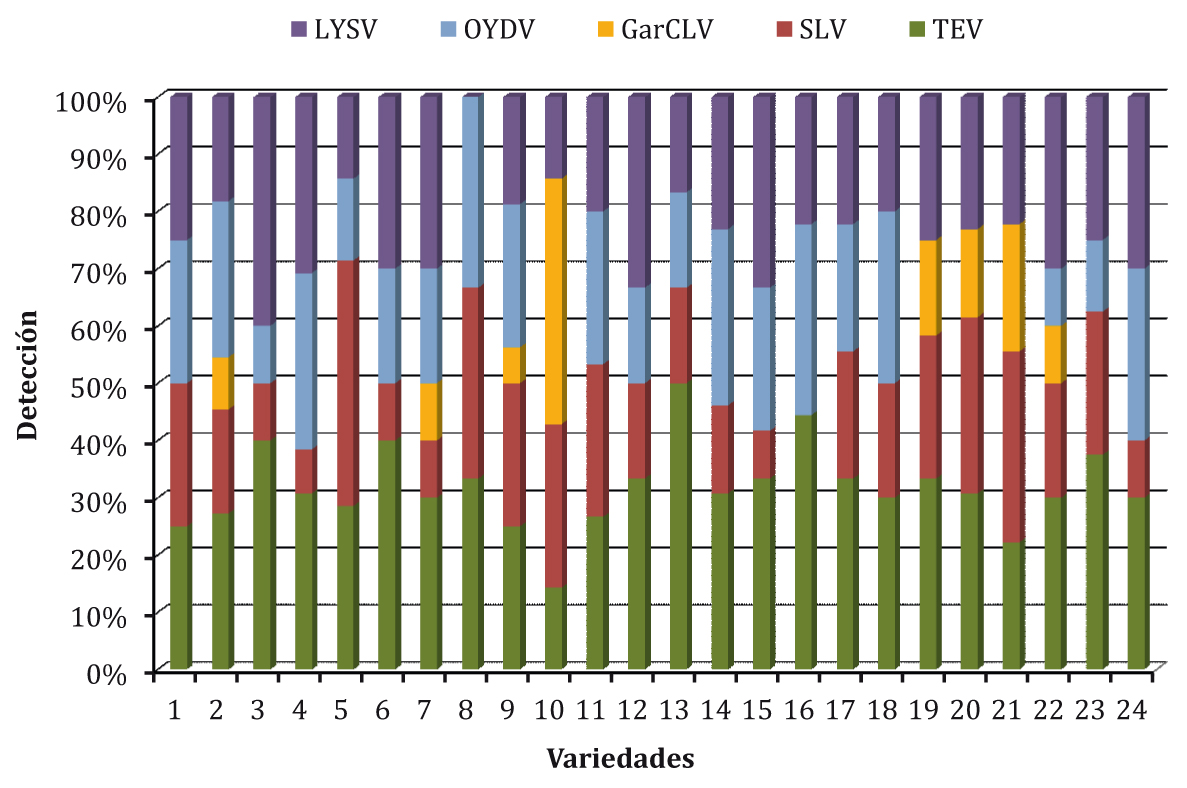Effect of thermic treatment on the presence of virus in garlic (Allium sativum L.) bulbs
Keywords:
thermic treatment, garlic varieties, virus, DAS-ELISAAbstract
It was evaluated the virus presence in cloves of 24 varieties of garlic before and after being thermo-treated using the serological technique DAS-ELISA for TEV, SLV, GarCLV, OYDV, and LYSV. Garlic bulbs were exposed to 33 ± 1 ºC during a period of six weeks. After thermic treatment, 23 varieties had one virus at least; however, none of the five viruses was detected in the cloves of the variety Español, also, the variety ChJO 13 was only positive to TEV. TEV was the more persistent virus through the thermic treatment. In spite of virus or variety, the percentage of virus-positive cloves was 53.5 and 45.1% before and after thermic treatment respectively. Most of the cloves showed multiple infections in diverse combinations. Only TEV and SLV appeared as single infections or with only one virus; after thermic treatment only TEV kept this characteristic. Viral concentration for TEV did not show significant changes before and after thermic treatment.

Downloads
Published
Issue
Section
License
Aquellos autores/as que tengan publicaciones con esta revista, aceptan las Políticas Editoriales.


